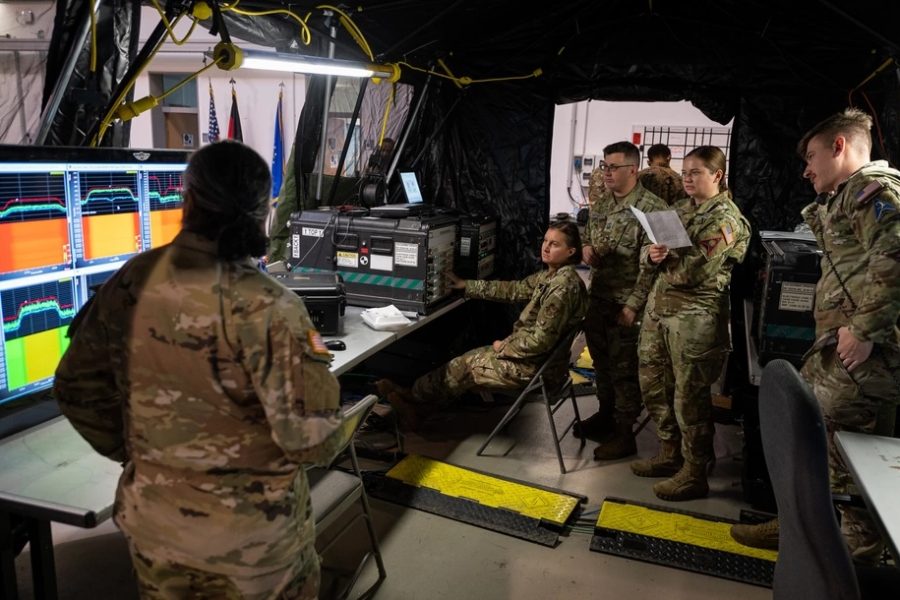The Space Rapid Capabilities Office, charged with quickly delivering cutting-edge, often-classified technologies for the Space Force, has awarded orders to 20 different small companies to work on software for commanding and controlling satellites that move around in orbit.
The program, dubbed Rapid Resilient Command and Control (R2C2), could be crucial as the Space Force considers the concept of “dynamic space operations,” in which instead of station-keeping to preserve fuel, satellites move frequently to dodge threats, gather data, be refueled, and more.
In June, the Space RCO announced it was creating a pool of vendors for R2C2 through what is called an Indefinite Delivery, Indefinite Quantity (IDIQ) contract, estimated to be worth $1 billion over five to seven years. The Sept. 26 announcement marks the first awards from that contract, with each company receiving up to $600,000.
“These awards are designed to help the awardees gain a baseline understanding of the current architecture, capabilities, and processes used within R2C2 and onboard essential personnel, while also providing the government team insight into the awardees’ classified processing capabilities and management processes,” the RCO said in a release.
The software these vendors will build will help operators at ground stations to manage “dynamic USSF satellites with protect-and-defend missions” at the tactical level, according to the release, as well as other satellites’ rendezvous and proximity operations planning, telemetry, and tracking and command.
Space RCO director Kelly Hammett said in December 2023 that R2C2 is fundamentally about “connecting the mission and the capability in the satellites with the ability to C2 them in a dynamic environment.
Hammett also said at the time the program was being managed by a combined office between his organization and Space Systems Command and had made good progress since starting in February 2023.
“We brought a couple of our design agents on contract. We have a number of demos,” he said then. “We’re actually going to be showing working software here in the next three months.”
In its Sept. 25 release, the Space RCO said that in May, the program “deployed mission-unique software to the cloud and demonstrated end-to-end data flow for a classified USSF satellite program,” followed by a demo in August in which the team was able to feed commands through its software on a commercial cloud to an on-orbit Space Force satellite.
The R2C2 program is closely related to another Space RCO effort, the Satellite Communications Augmentation Resource. That program will modernize the Space Force’s aging Satellite Control Network and allow the service’s array of antennas to connect with multiple satellites at a time, greatly expanding operators’ ability to talk with their satellites.
That bandwidth and speed will be crucial for dynamic space operations, requiring operators to be much more hands-on in directing satellites where to go and when to do it. That will require upgraded battle management software such as R2C2 to ensure operators have a full picture of what’s happening.
It’s all a far cry from most current satellite’s movements and operations, which mostly requires Guardians to focus on “station keeping,” or ensuring they stay in place in orbit.


